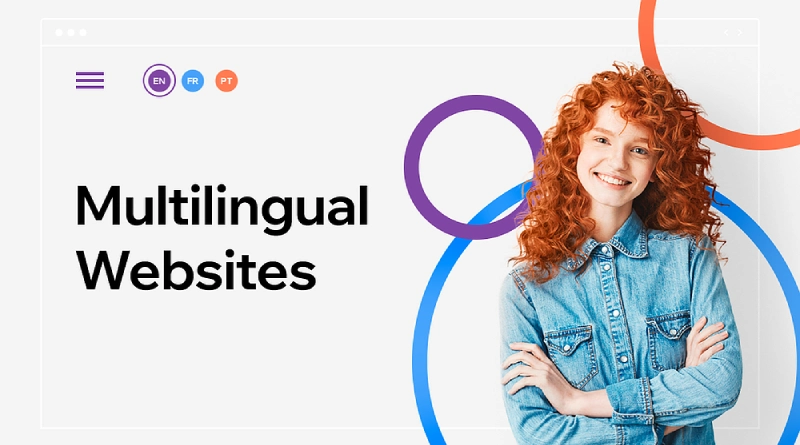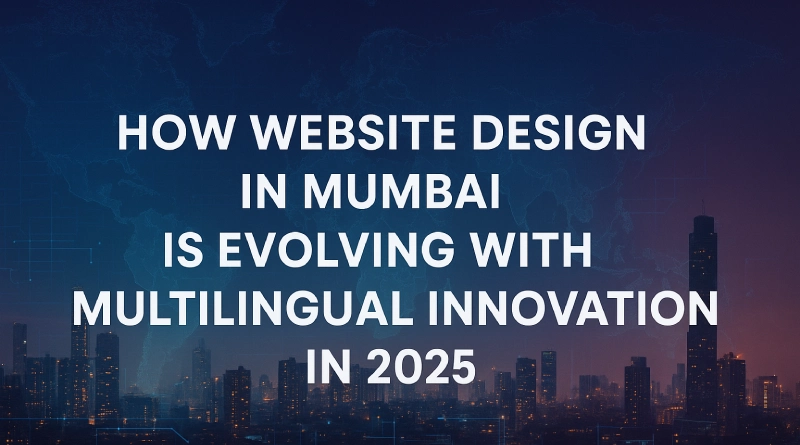How Website Design in Mumbai Is Evolving with Multilingual Innovation in 2025
Why Multilingual Website Design Matters More Now
-
Demographic diversity:
In Mumbai, its population comprises representatives of Marathi, Hindi, and English speakers, as well as various dialects and groups of immigrants. A site that contains a single language will run a risk of not engaging all categories of users. Multilingual website design 2025 is no longer considered a luxury to local brands, as it is more and more a form of inclusion and conversion.
-
Mobile-first and low-bandwidth :
A large number of users are provided with access to the sites mainly through mobile and usually under fluctuating network situations. Not only should a multilingual site have options of various languages, but it also needs to have an optimally fast and responsive layout as well as utilize the resources offered within each version.
- SEO and usability :
When implemented properly, multilingual websites will attract increased search traffic in regional/local languages. Search engines consider further search results in 2025, where the relevance of language-specific content is prioritized, as well as tags on hreflang and localization, which are two more recommendations. The problem is that Mumbai companies are also paying more attention to the hyper-local SEO in Marathi, Hindi, and mixed languages.
Key Innovations in Multilingual Website Design in Mumbai in 2025
1. Dynamic Language Selection & Geo/Locale Detection
2. UX that Respects Script, Typography & Layout Differences
3. Content Strategy & Localization, Not Just Translation
4. Multilingual Forms, Voice Interfaces, and Chatbots
5. Efficient Translation & Management Pipelines
How to Create a Multilingual Website: Best Practices for Mumbai Businesses
- 1. Plan language strategy early:
Choose the first languages to support (Marathi / Hindi / English, etc.)
according to the data of the users, the reachability of the markets, and the business purposes. - 2. Use scalable architecture:
Isolate content on a language (subdirectories/ subdomains) and use sufficient hreflangs,
metadata and SEO. Make sure that all versions are clean in terms of URLs, sitemaps and navigations. - 3. Choose design system/components with flexibility:
Usage of design frameworks/elements capable of de-ciphering the different
length of text and other scripting and adjusting typography. Readability,
cultural appropriateness, and check overflow. - 4. Localize images, icons & cultural cues:
It would be wrong to expect what works as visuals on one
group of people to work on another one. Include visible symbols of local scenes or people where a used or customized color palette is included, including colored symbols that make sense in the local culture. - 5. Maintain consistency through glossaries and brand tone:
Elaborate translation style guides and dictionaries so uniformity of the brand voice can be achieved. An example will be the use of formal or informal Hindi/Marathi.
- 6. Ensure performance & accessibility:
Multilingual content implies increased assets, perhaps an increased page load. Apply lazy loading and optimize bulky code. Also make it available in other languages (readability of fonts, screen readers).
- 7. Regular QA and user feedback:
Test on devices, and run linguistic QA. Gather opinions of native speakers. Localized content is especially appropriate when it comes to local people (what is natural in Marathi to a person in Mumbai may have nothing to do with Pune).

Role of Website Translation Tools & Website Translation Tools Innovations
- AI-assisted translation + human post-editing : It is used in the first draft, but it requires post edits by the local designers and content teams to make sure that the outputs are right in terms of idioms, tone, and context.
- Translation management systems (TMS) & platforms : It can offer localization services, AI translation power, the selection of an engine with contextual consideration, numerous integrations made, and thus simplified handling of multiple content appearances in different languages.
- Free and free versions of plain and small business tools : WordPress sites in particular have some multilingual capabilities in the form of plugins, thus making it possible to begin without excessive initial expenses.
- Workflow automation : Most of the tools that come with website translation dedicated to the purpose also include version control, translation memory, glossaries, and automated QA checks. It prevents the occurrence of duplicated unsteady translations and accelerates updates.
- Concentrating on regional / low-resource languages : They are also progressively implementing more support into languages of interest to Mumbai and Maharashtra (Marathi, etc.) and making scripts better handled, tone-sensitive, and dialect-variation. Increasingly there are tools that are able to accommodate contributions/corrections by native speakers.
Challenges and How Mumbai Is Addressing Them
- Quality vs. Cost Trade-offs : Machine translation is quick and inexpensive, but it can be culturally inaccurate. A lot of companies in Mumbai have continued hybrid models, i.e., machine translation and then human translators.
- Limitations of the design : The layouts are interrupted by supporting various scripts (especially the scripts containing complicated diacritics). Another trend that Mumbai designers are trying is responsive typography and brittle pieces.
- User behaviour and code mixing : Code mixing tends to be seen by the user sometimes. Hinglish, Marathi-English, and so on. That is not all about not pure translation. Supplementing receipt of hybrid content or code switching material is increasingly widespread on a few websites.
- Maintenance overhead : The more languages, the more content that has to be updated and maintained. In the absence of versioning, translation memory, and a glossary, this will be cumbersome. The companies that embrace effective TMS address this problem.
Looking Ahead: What’s Next for Multilingual Web Design in Mumbai
- Adaptive AI Localization Models : Models that will change with the user (the more they speak in a specific language, the more they use specific vocabulary, and the tone we use with him/her).
- Voice and Speech : Interfaces based on regional languages The voice search or voice navigation in the Marathi or Hindi language (or rather the mixed languages) then will be more adopted.
- Multilingual AR/MR content : The addition of AR overlay can be done in the local languages as well, as the case of tourism, property application, or retail suggests.
- Improved Provision of Low-Resource and Dialect Languages : There is more need to support dialects and local lingos and minority languages. Larger data and more widespread training to prevent prejudice.
- Better Data and Analytics : What versions of language perform better, drop-off rates, and user preference? Based on that, ask the question of where to invest in translation/localization.

